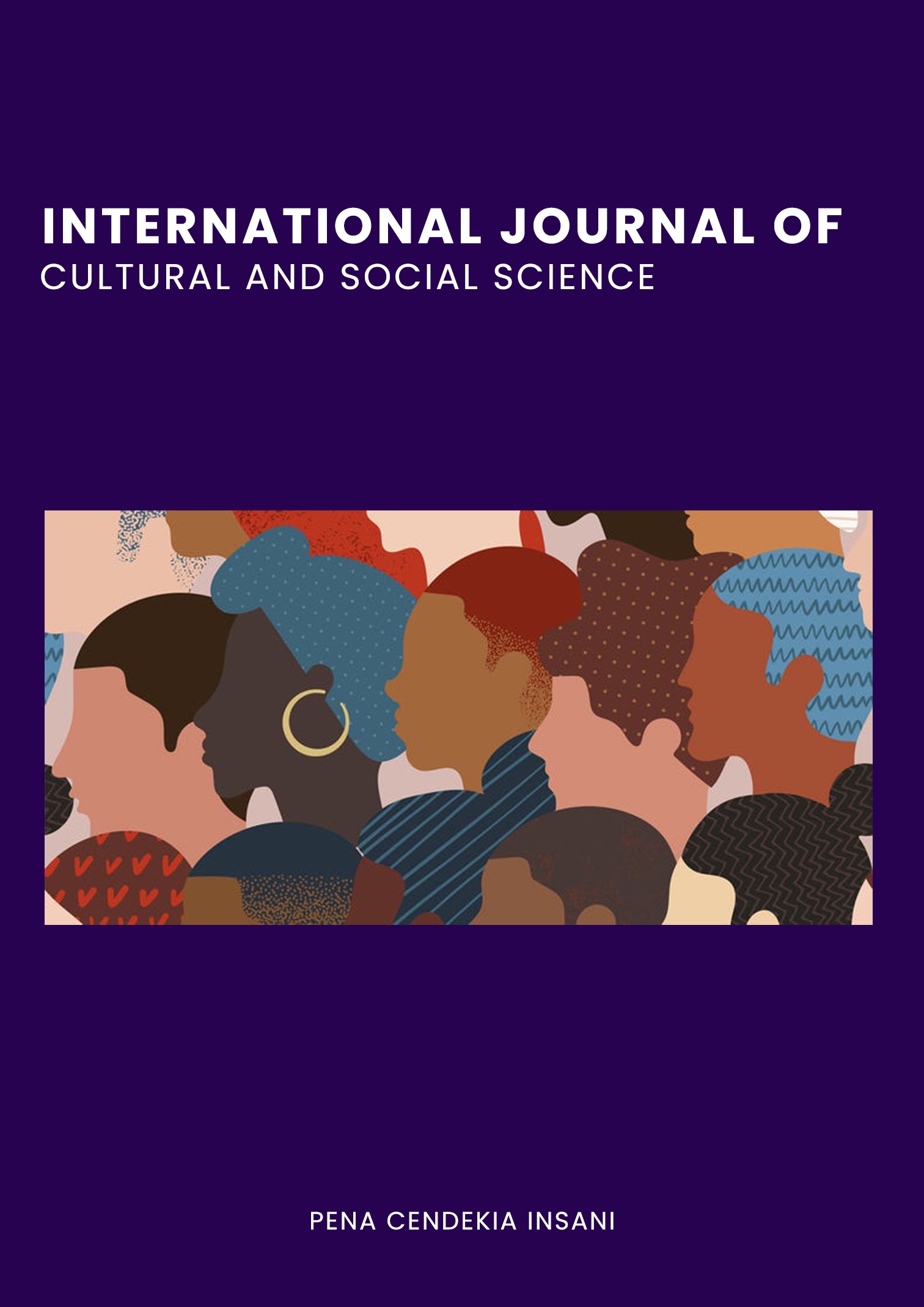CRISIS COMMUNICATION ON X: AQUA’S RESPONSE TO BOYCOTT ALLEGATIONS OVER THE ISRAEL–PALESTINE CONFLICT
DOI:
https://doi.org/10.53806/ijcss.v6i1.1001Keywords:
Geopolitical Boycott, Situational Crisis Communication Theory (SCCT), Digital Activism, Crisis Communication StrategyAbstract
This study aims to analyze the crisis communication strategy of the X account @SehatAQUA in responding to the boycott issue triggered by the Israel–Palestine geopolitical controversy. The research applies the Situational Crisis Communication Theory (SCCT) as a theoretical framework, using a qualitative case study approach. Observations were conducted on the @SehatAQUA account from March 24 to 29, 2025. The primary data analyzed consisted of 14 items: 5 negative public responses, 5 positive public responses, and 4 official posts or press releases from Aqua. Secondary data from news coverage and academic literature were used to strengthen the contextual interpretation. Data validity was ensured through source triangulation. The findings reveal that Aqua adopted a rebuild posture strategy as outlined in SCCT by delivering transparent clarifications, affirming political neutrality, debunking disinformation with UN-based data, collaborating with mainstream media, and promoting digital literacy. This strategy proved effective in shifting public sentiment from negative to more positive and reinforcing a humanitarian-based brand image. The study highlights the importance of a timely, data-driven, and values-oriented crisis communication response in addressing geopolitical pressure in the digital age.
References
K. A. Babatunde, “Public Relations and Social Media for Effective Crisis Communication Management,” J. Bina Praja, vol. 14, no. 3, 2022, doi: 10.21787/jbp.14.2022.543-553.
S. Dhar and I. Bose, “Victim crisis communication strategy on digital media: A study of the COVID-19 pandemic,” Decis. Support Syst., vol. 161, 2022, doi: 10.1016/j.dss.2022.113830.
Y. D. Risanti, R. Anisa, and P. Prihandini, “Pemasaran empatik sebagai strategi komunikasi merek di masa pandemi Covid-19,” J. Manaj. Komun., vol. 5, no. 2, 2021, doi: 10.24198/jmk.v5i2.32745.
Y. I. Lee, X. Lu, T. Voges, and Y. Jin, “Fending Off Unverified Accusation with Narratives: The Role of Primary and Secondary Narratives in Organization’s Response Effectiveness in an Ongoing Crisis,” J. Int. Cris. Risk Commun. Res., vol. 6, no. 1, 2023, doi: 10.30658/jicrcr.6.1.2.
I. Vlachos, “Implementation of an intelligent supply chain control tower: a socio-technical systems case study,” Prod. Plan. Control, vol. 34, no. 15, 2023, doi: 10.1080/09537287.2021.2015805.
Fajri Gusnadi, Mohamad Efendi, and Nurliya Apriyana, “Analisis Brand Hate Terhadap Brand Avoidance Pada Merek Starbucks Konteks Issue Israel-Palestina,” J. Cahaya Mandalika ISSN 2721-4796, vol. 5, no. 1, pp. 265–277, 2024, doi: 10.36312/jcm.v5i1.2726.
U. Kh, A. Chalim, and F. Su, “Boycott , Divestment , Sanctions ( BDS ) Movement of Israel Product?: Indonesian Response to Palestinian-Israeli Conflict of Religious Moderation Perspective,” vol. 7, no. 1, pp. 140–151, 2024.
T. Novera, “STRATEGI PUBLIC RELATIONS LION AIR DALAM MENGHADAPI KRISIS JATUHNYA PESAWAT JT610,” J. Ranah Komun., vol. 3, no. 1, 2019, doi: 10.25077/rk.3.1.1-11.2019.
M. Pratiwi, F. S. Musdalifah, M. Y. Yusa, and A. Rahmawati, “Crisis Management and Communication: Sriwijaya Air Sj182 Crash Flight,” Proc. 3rd Int. Media Conf. 2021 (IMC 2021), vol. 672, no. Imc 2021, pp. 73–81, 2022, doi: 10.2991/assehr.k.220705.007.
M. Toha, E. Anoh, and Iswadi, “Strategi Public Relations Dalam Menangani Pemberitaan Negatif Di Media Massa Atas Pengoperasian Teknologi Pionir Indonesia,” Technomedia J., vol. 8, no. 2, 2023, doi: 10.33050/tmj.v8i2.2088.
J. W. Creswell and J. D. Creswell, Research Design: Qualitative, Quantitative, and Mixed Methods Approaches 6th edition - John W. Creswell, J. David Creswell - SAGE. 2022.
M. B. Miles, A. M. Huberman, J. S. University, and Data, “Qualitative Data Analysis: A Methods Sourcebook,” in Learning Sciences Research for Teaching, 2021.
U. Flick, “Designs, methods and data in mixed methods research,” in Doing Triangulation and Mixed Methods, 2020. doi: 10.4135/9781529716634.n6.
A. F. Rahmat and M. Rafi, “Social Media Network Analysis on Twitter Users Network to the Pension Plan Policy,” Commun. J. Commun. Stud., vol. 8, no. 1, 2022, doi: 10.37535/101009120225.
J. Malik, F. Turpyn, and M. Nasucha, “MENELISIK HOAKS DALAM PEMBERITAAN KONFLIK KASHMIR DI PORTAL BERITA TAHUN 2019-2020,” J. CommLine, vol. 07, no. 01, 2022.
T. Tasente, M. Rus, and G. Tanase, “From Outbreak to Recovery: An Observational Analysis of the Romanian Government’s Online Communication during and post-COVID-19,” Vivat Acad., vol. 157, 2023, doi: 10.15178/va.2024.157.e1513.
S. C. Chia, F. Lu, and Y. Sun, “Tracking the Influence of Misinformation on Elderly People’s Perceptions and Intention to Accept COVID-19 Vaccines,” Health Commun., vol. 38, no. 5, 2023, doi: 10.1080/10410236.2021.1980251.
L. Domschat, M. Stephens, and H. Saeed, “Communication to protect brand image during a terrorism crisis: Application of situational crisis communication theory,” J. Contingencies Cris. Manag., vol. 31, no. 4, 2023, doi: 10.1111/1468-5973.12489.
F. Jafarinejad, M. Rahimi, and H. Mashayekhi, “Tracking and analysis of discourse dynamics and polarity during the early Corona pandemic in Iran,” 2021. doi: 10.1016/j.jbi.2021.103862.
E. Jardine, “Blame the messenger: perceived mis/disinformation exposure on social media and perceptions of newsfeed algorithmic bias,” J. Cyber Policy, vol. 6, no. 2, 2021, doi: 10.1080/23738871.2021.1953557.
Q. Zheng, “Restoring trust through transparency: Examining the effects of transparency strategies on police crisis communication in Mainland China,” Public Relat. Rev., vol. 49, no. 2, 2023, doi: 10.1016/j.pubrev.2023.102296.
N. Steinfeld, “The disinformation warfare: how users use every means possible in the political battlefield on social media,” Online Inf. Rev., vol. 46, no. 7, 2022, doi: 10.1108/OIR-05-2020-0197.
M. Gómez-Rico, A. Molina-Collado, M. L. Santos-Vijande, M. V. Molina-Collado, and B. Imhoff, “The role of novel instruments of brand communication and brand image in building consumers’ brand preference and intention to visit wineries,” Curr. Psychol., vol. 42, no. 15, 2023, doi: 10.1007/s12144-021-02656-w.
B. Haupt, “The Use of Crisis Communication Strategies in Emergency Management,” J. Homel. Secur. Emerg. Manag., vol. 18, no. 2, 2021, doi: 10.1515/jhsem-2020-0039.
N. I. Afkarina, “STRATEGI KOMUNIKASI HUMAS DALAM MEMBENTUK PUBLIC OPINION LEMBAGA PENDIDIKAN,” Idaarah J. Manaj. Pendidik., vol. 2, no. 1, 2018, doi: 10.24252/idaarah.v2i1.5124.
J. Boon, J. Wynen, and K. Verhoest, “Do reputational threats influence the rigidity of US agencies? A dynamic panel data approach,” Public Adm. Rev., vol. 83, no. 6, 2023, doi: 10.1111/puar.13732.
Downloads
Published
Issue
Section
License
Copyright (c) 2025 Samsul Bahri Pasaribu; Indira Fatra Deni P

This work is licensed under a Creative Commons Attribution-ShareAlike 4.0 International License.










